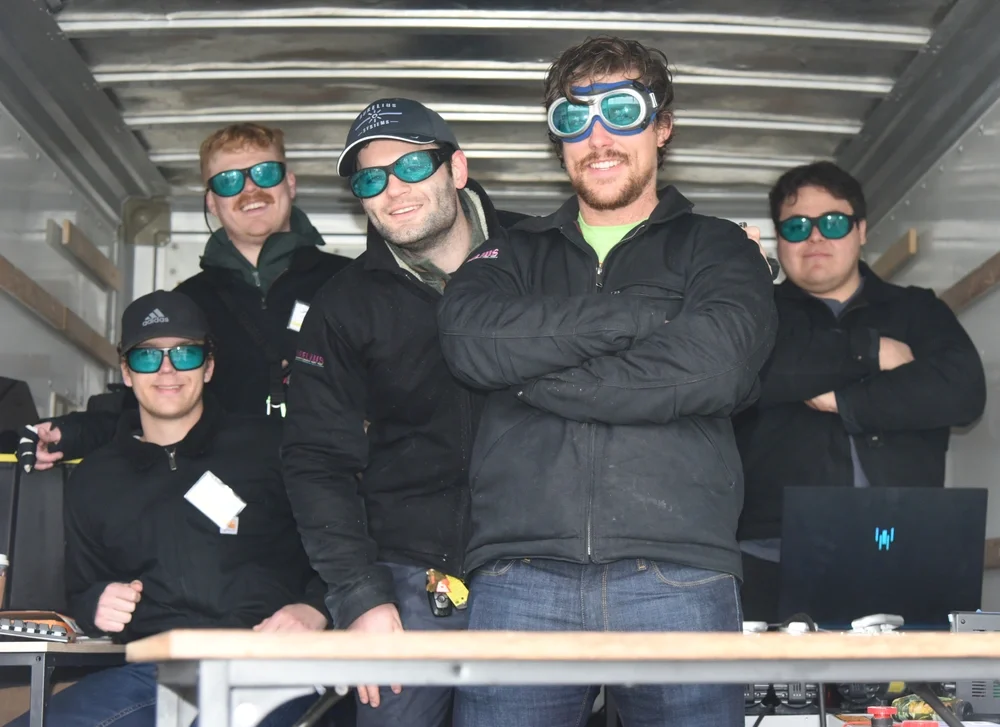Lasers Destroy Drones at JIFX 25-2
Rapidly fielding emerging technologies and prioritizing investments in AI, drones, and counter-drone systems, among other technologies, are key to military modernization and remaining the strongest, most lethal force in the world.
The Joint Interagency Field Experimentation (JIFX) team at the Naval Postgraduate School (NPS) is meeting this challenge by executing another highly collaborative week of rapid prototyping and defense demonstrations with dozens of emerging technology companies. Conducted alongside NPS’ operationally experienced warfighter-students, the event is a win-win providing insight to accelerate potential dual-use applications.
Conducted in partnership with Camp Roberts, the California Army National Guard post in southern Monterey County, and occurring quarterly, February’s weeklong JIFX featured innovative technologies that directly addressed many of the needs designated within DOD’s Critical Technology Areas, including: Directed Energy, Trusted AI and Autonomy, Advanced Materials, Integrated Sensing and Cyber, Operational Energy Generation and Storage, and much more.
Even though downpours from a week of heavy storms made for less-than-ideal flight conditions in the unrestricted airspace available for use during JIFX, a single-day record for sorties flown by uncrewed autonomous systems (UAS)—or drones—was broken. On the third day, 85 sorties were flown by 11 different drones at three different tactical locations—McMillan Airfield, the Combined Arms Collective Training Facility (CACTF), and the Forward Operating Base (FOB).
According to JIFX Director, retired U.S. Army Special Forces Col., Michael Richardson, “This February event was the most engaging experimentation week since before the pandemic. Part of that was the weather. The periodic heavy rain and strong winds gave our participating firms the same challenging conditions their technologies will be expected to perform if part of the fleet or force.
“I’m happy to report that all of them rose to the challenge. Several firms accomplished firsts with their systems and nearly everyone collaborated in an ad-hoc experiment or two that demonstrated their capacity to address operational challenges more effectively together.”
The hard rain and wind did not even deter a laser weapon system (LWS) from zapping a steady stream of static and towed Group 1 UAS. This was the first use of an LWS at JIFX over the course of its nearly two decade-long history.
During the week, 23 industry partners conducted experiments with 24 unique technologies that represented the following research areas:
Communication and networking
Countering uncrewed systems (including by laser weapon systems)
Cyber, cyber security and electronic warfare
Expeditionary operations (including with additive manufacturing)
Infrastructure and power
Precision strike, non-lethal weapons and information operations
Situational awareness
These technologies were evaluated by DOD stakeholders from Air Force Special Operations Command (AFSOC), Army Futures Command (AFC), Department of the Navy Small Business Innovation Research Experimentation Cell (DON-SEC), Defense Threat Reduction Agency (DTRA), Joint Special Operations Command (JSOC), Navy Special Warfare (NSW), U.S. Central Command (USCENTCOM) and U.S. Transportation Command (USTRANSCOM).
JIFX lowers barriers for emerging technology companies, industry, academia, and researchers to collaborate with the fleet/DOD on solving real-world problems in a DevOps environment with the warfighter. Attending JIFX were 18 NPS officer-scholars and faculty, some of whom were researching counter UAS technology in preparation for an upcoming international exercise.

